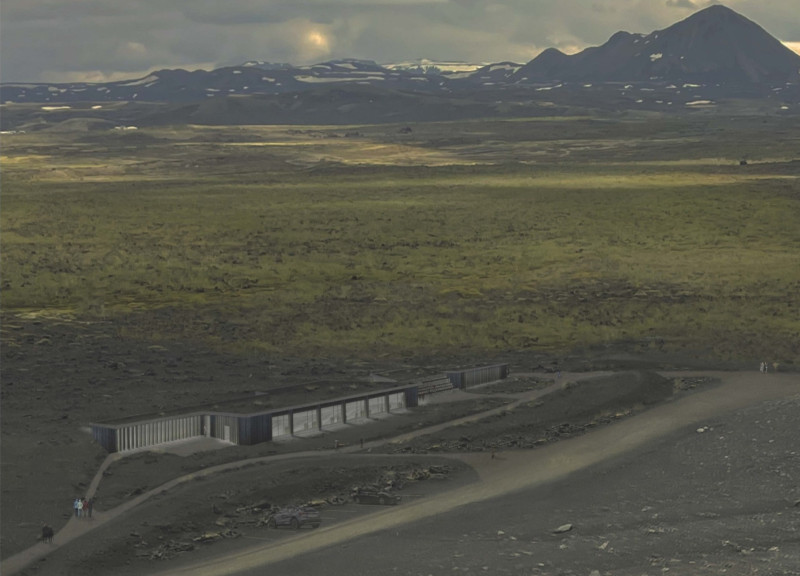5 key facts about this project
The design is located in Iceland, near Hverfjall Volcano, within the Mid-Atlantic Ridge. This setting plays a crucial role in the architectural vision. The approach focuses on blending the building with the landscape while emphasizing its geological features. The overall concept revolves around using the land's topography and understanding geological movements to create spaces that connect individuals with their environment.
Geological Integration
The design draws inspiration from the fault line that cuts through the region. This line creates a diagonal fracture that shapes both the layout and purpose of the building. This fracture serves as a pathway, guiding people through different areas of the space. By responding to the geological movements of the site, the design connects the human experience with the earth’s structure.
Topographical Engagement
Dynamic topography is a central theme in the building's formation. Elevating the structure in a way that minimally disrupts the existing landscape allows for a natural flow between the building and its surroundings. The use of small mounds helps to integrate the structure with the land, avoiding excessive excavation and foundation work. This approach reflects a modern attitude towards construction, highlighting care for the environment.
Ecological Preservation
Attention to ecological concerns is evident in the building's placement. It is designed to sit close to an existing birch forest, which allows the natural habitat to thrive. This positioning supports the growth of nearby vegetation and illustrates a desire to harmonize with local ecosystems. The design encourages nature and architecture to coexist, supporting the health of the environment.
Sustainable Systems
Sustainability plays a significant role in the building's design. The structure is oriented to maximize sunlight, which helps with energy efficiency. The use of fresh air systems and heat exchange contributes to comfort within the building. Additionally, rainwater management systems are incorporated, addressing local water needs and reducing the risk of flooding. This fosters a relationship between the building and its surroundings, ensuring both can thrive together.
As the design unfolds through the landscape, the building reflects the natural contours of the site, inviting visitors to interact with the environment both inside and outside.






















































